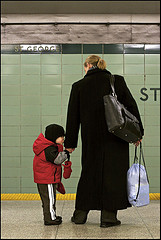The TimesOnline (UK) reports on the backlash that has begun against a culture in which all children are given prizes and young people are only used to getting their way. Reporter
A UK sociologist weighs in…
Frank Furedi, professor of sociology at Kent University, believes our child-centredness is really adult-centredness. “It’s a way of reassuring ourselves that our children are going to be insulated from pain and adversity,” he said. “We tell children they are wonderful now for tying their shoelaces or getting 50% in an exam. But really it’s our way of flattering ourselves that we’re far more sensitive to children than people were in the past.”
The trouble is, Furedi says, that it’s a self-fulfilling prophecy. “You’re subtly giving kids the message that they can’t cope with life,” he said. “I have a son of 12 and when he and his friends were just nineI remember being shocked at them using therapeutic language, talking about being stressed out and depressed.”
While researching The Dangerous Rise of Therapeutic Education, its co-author Dennis Hayes, visiting professor of education at Oxford Brookes University, discovered a leaflet telling students that if they studied sociology they might come across poor people and get depressed and if they studied nursing they might come across sick people and get distressed – so the university offered counselling.

 A
A 
 MercuryNews.com
MercuryNews.com Talking about marriage? Call in the sociologists!
Talking about marriage? Call in the sociologists!